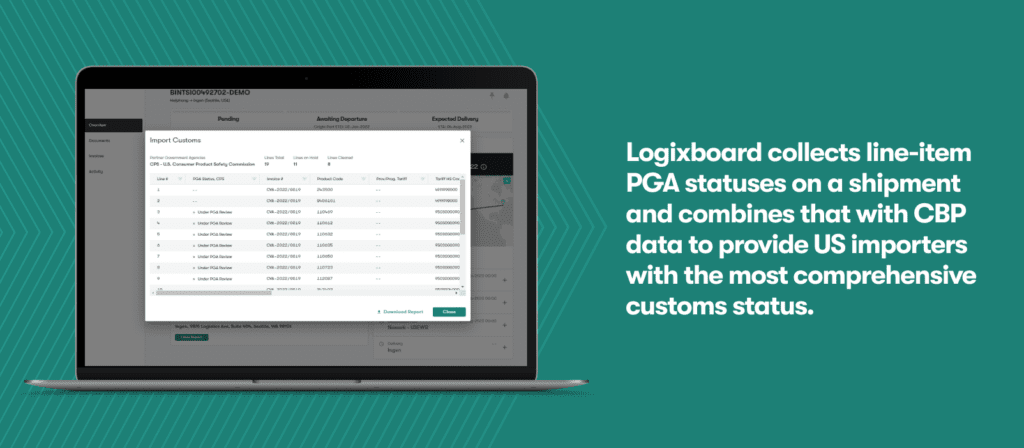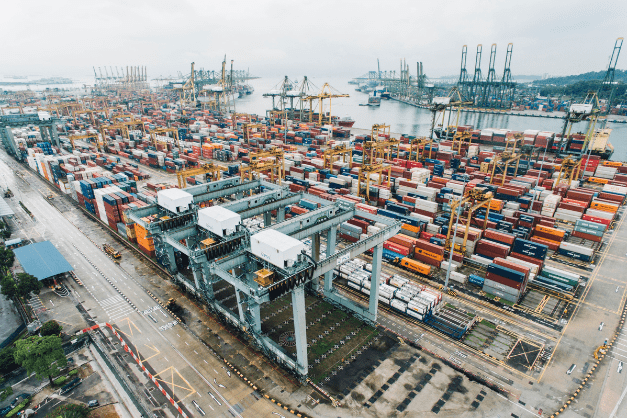In this article
When looking for the right freight forwarder, price is a major factor for many shippers. In fact, in a survey by Logixboard and FreightWaves, 76% of shippers scored price as “very important” or “fairly important” in their list of priorities– only below customer service and cutting-edge technology.
However, giving your customers a good deal goes beyond your upfront rate. After all, getting a low-cost forwarder can quickly backfire if it ends up costing you more in unexpected charges. Therefore, as shippers decide on a forwarder to help them optimize costs, they’ll also look for someone who’s skilled in avoiding extra fees.
In this post, we’ll talk about demurrage and detention charges, how they work, and why it matters to you as a forwarder.
Key terms:
- Demurrage: The cost incurred daily for leaving your cargo at the port outside of the allotted free time
- Detention: The cost incurred daily or hourly for using equipment outside of the agreed upon time, typically outside the terminal
- Free time: The amount of time you’re given to use space or equipment without incurring extra charges
- Last free day: The last day before either demurrage or detention charges are incurred
What is demurrage?
Demurrage arises when containers are left at the port for longer than the free time, or the allotted number of days for which your cargo can be left at the terminal at no additional charge.
Free time typically averages around 4-5 days, but it can vary depending on the terminal. In times of heightened port congestion, some shipping lines will cut free time further in an effort to reduce traffic.
The cost of demurrage also varies based on the terminal and carrier. While it generally ranges from $75-150 per day per container, it can reach up to $300. Additionally, the rate often increases as the container is left at the port for longer. For instance, you may pay $100 in demurrage charges per day for the first five days, but $200 for each day after that.
By making it increasingly expensive to leave your container at the port, shipping lines aim to discourage shippers from using the terminal as a storage area.
What is detention?
Detention, also known as per diem, refers to the period in which you continue to use rented equipment (ex: a shipping container) past the allotted time. Typically, this applies to empty containers that have left the port after being unloaded. However, some shipping lines may still charge detention fees on full containers that are still in use after the free time is up.
While per diem detention fees can also range, they typically average between $50-100 per container per day. Similar to demurrage charges, detention rates can also increase over time.
Driver detention
Driver detention is similar to per diem detention, except that it refers to excessive time spent in the live loading/unloading process. Because a live load requires an actual truck driver to be present throughout the process, scheduling can be even more rigid.
While per diem free time typically ranges from 7-10 days, free time before driver detention often maxes out around two hours. In turn, charges are also levied on an hourly basis, with rates averaging around $50-100 per container per hour.
Why do shipping lines charge demurrage and detention fees?
While detention and demurrage charges can be a major source of frustration for shippers, they play an important role in the logistics industry. For one, port congestion is a common problem that leads to countless side effects, including extended dwell times, increased emissions, and unexpected global delays. Levying demurrage charges can push shippers to improve efficiency on their end, effectively helping the rest of the system move smoothly.
What do demurrage and detention charges mean for freight forwarders?
Demurrage and detention fees can add up quickly for shippers, cutting into their profit margins. This issue has only intensified as of recently, with a report by XChange Solutions identifying a 12% increase in demurrage and detention charges from 2020 to 2022.
In an effort to avoid unexpected fees, shippers are searching for forwarders who can help them combat common causes of demurrage and detention, including:
- Missing or incorrect documentation
- Insufficient communication
- Late receipt of documents
- Delayed customs clearance
- Shortage of chassis or trucks available
As a freight forwarder, providing your customers with stellar service to avoid unexpected charges can help differentiate yourself from the competition. CX solutions like Logixboard can give superior visibility into one of the hardest-to-see phases of a shipment– customs. Book a demo to see Automated Container Tracking (ACT) in action.


